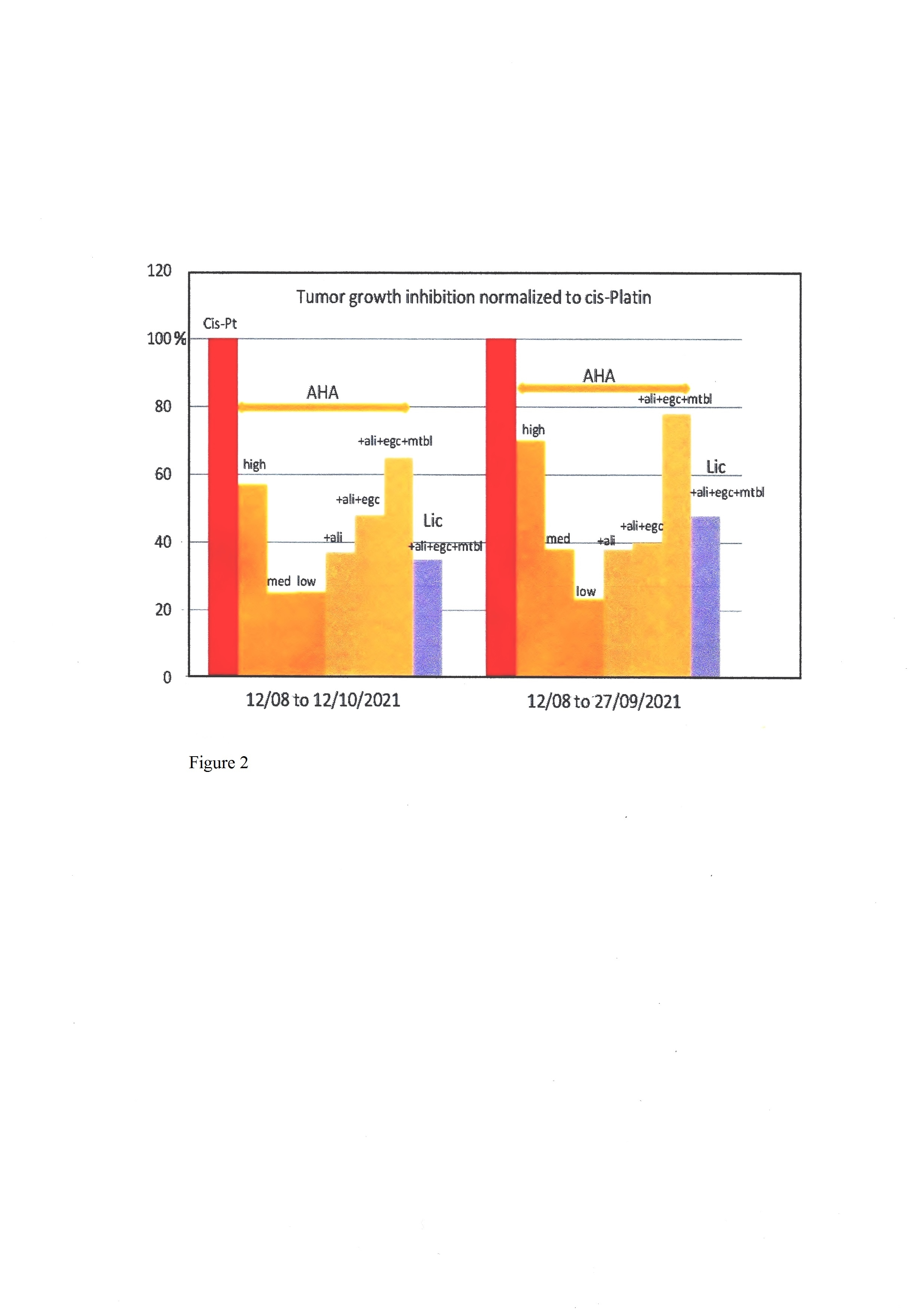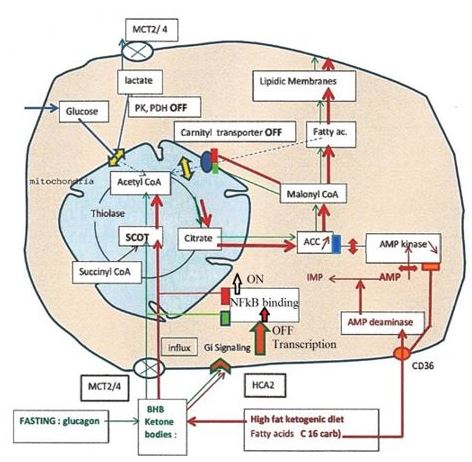Figure 1: Inhibitiors and targets for SCOT dependent tumors
Agents and their concentrations |
Lipoic Acid (LIP) (Sigma Aldrich T1395) 10 mg/kg dissolved in PBS via Ethanol intraperitoneally (i.p.) two times |
Calcium Hydroxycitrate (GAR) from Garcinia (IWDO-India) 250 mg/kg dissolved in PBS i.p. (2X/D) |
Cisplatin (Sigma Aldrich 479306) 1 mg/kg dissolved in PBS i.p. (1X/2D) |
AcetoHydroxamic Acid (AHA) (Sigma-Aldrich 159034) 225 mg/kg (LOW), 450 mg/kg (MEDIUM) and 900 mg/kg (HIGH) dissolved in PBS via Ethanol i.p. (1X/D) |
Allicin (ALI) (Must be freshly synthesized from DADS) DADS: Diallyl Disulfide (Sigma-Aldrich SMB00378) |
Epigallocatechin (EGC) (Sigma-Aldrich E3768 ) 150 mg/Kg dissolved in PBS i.p. (1X/D) |
Lithothamnium calcareum (LIC) (Parchem - New Rochelle, New York) 180 mg/kg dissolved in PBS i.p. (1X/D) |
Group 1: Zero Control injected just by culture medium and PBS |
Group 2: Negative Control injected by PBS |
Group 3: Positive Control injected by Cisplatin (Cis-Pt) |
Group 4: Test 1 injected by AHA low concentration |
Group 5: Test 2 injected by AHA Medium concentration |
Group 6: Test 3 injected by AHA high concentration |
Group 7: Test 4 injected by AHA/ALI Medium concentration |
Group 8: Test 5 injected by AHA/ALI/EGC Medium concentration |
Group 9: Test 6 injected by AHA/ALI/EGC/LIP/GAR Medium concentration |
Group 10: Test 7 injected by LIC/ALI/EGC/LIP/GAR |
12/08/2021 |
Tumor volume.mm3 |
Cis Pt |
AHA |
LIC |
|||||
Low |
med |
high
|
med+ |
med + |
med+ |
+Ali+Egc+mtbl |
|||
27/09/2021 |
1627 +- |
871+- |
1450+- |
1347+- |
1101+- |
1334+- |
1320+- |
1036+- |
1256+- |
t-statistic N=5 |
|
P<0.0001 |
P=0.0373 |
P=0.0041 |
P<0.0001 |
P=0.0018 |
P0.0023 |
P=0.0001 |
P0.0003 |
12/10/2021 |
3893+- |
1451+- |
3370+- |
3282+- |
2505+- |
2989+- |
2728+- |
2304+- |
3041+- |
t-statistics N=5 |
|
P<0.0001 |
P=0.048 |
P0.0537 |
P=0.0003 |
P=0.0036 |
P=0.0005 |
P=0.0002 |
P=0.0034 |
Tumor growth Inhibition normalized to Cis-Pt effect |
27/09 |
100% |
23% |
38% |
70% |
38% |
40% |
78% |
48% |
12/10 |
100% |
22% |
25% |
57% |
37% |
47% |
65% |
35% |
|
Table 1: Effect of Ketolysis inhibition on the decrease of tumor volumes
12/08/2021 |
Tumor NFkB ng/l |
Cis Pt |
AHA |
LIC |
|||||
Low |
med |
high
|
med+ |
med + |
med+ |
+Ali+Egc+mtbl |
|||
12/10/2021 |
0.452+- |
0.305 +- |
0.352+- |
0.315+- |
0.251+- |
0.286+- |
0.256+- |
0.146+- |
0.181+- |
t-statistic N=5 |
|
P=0.0001 |
P=0.0004 |
P<0.0001 |
P<0.0001 |
P<0.0001 |
P<0.0001 |
P<0.0001 |
P<0.0003 |
Tumor NFkB |
12/10 |
100% |
66%
|
94% |
136% |
112% |
133% |
206% |
181% |
Table 2: Effect of Ketolysis inhibition on the decrease of NFkB nuclear activity in tumors
Figure 1: Inhibitiors and targets for SCOT dependent tumors

Figure 2: Tumor volume decrease, in percent of the positive cisplatin control
Figure 3: NFkB transcriptional inhibition, by SCOT and ketolysis inhibition

Figure 4: Tumor cells use more efficiently BHB, coming from a high fat diet, than fasting BHB
Tables at a glance
Figures at a glance